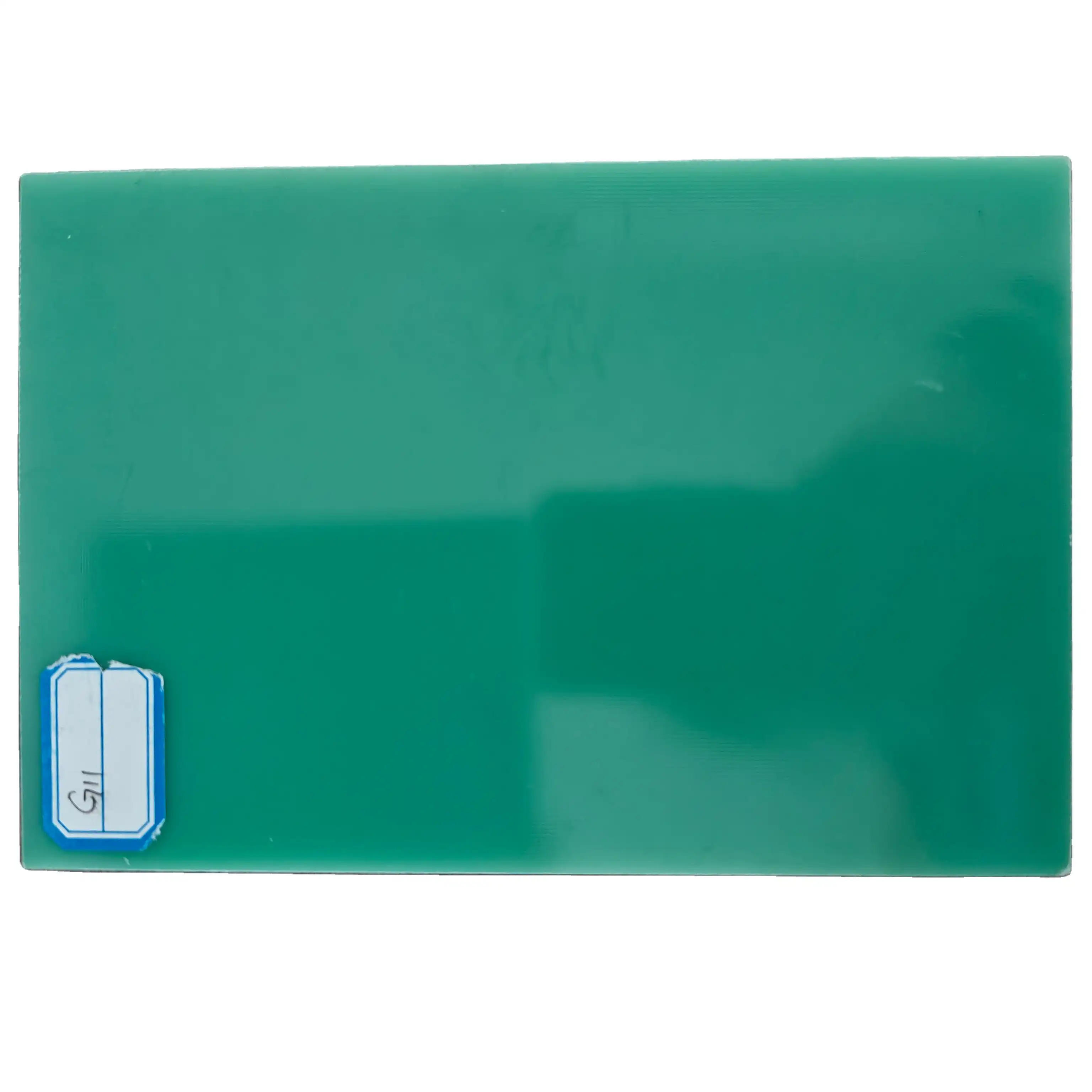What Are the Best Practices for Mounting G11 Laminates?
Surface Preparation and Cleaning
Before mounting G11 sheets, it's crucial to prepare the surface meticulously. Start by cleaning the mounting area thoroughly, removing any dust, grease, or debris that could compromise adhesion. Use a non-abrasive cleaner suitable for electrical applications to avoid damaging the substrate. For optimal results, consider using isopropyl alcohol or a specialized electronic cleaner to ensure a pristine surface.
After cleaning, inspect the surface for any irregularities or damage. Smooth out any rough spots and fill in minor imperfections to create an even mounting surface. This step is vital for ensuring uniform contact between the G11 sheet and the substrate, preventing air pockets that could lead to insulation failures or hotspots.
Proper Sizing and Cutting Techniques
Accurate sizing of G11 sheets is paramount for effective mounting. Measure the installation area precisely, accounting for any cutouts or special shapes required. When cutting G11 sheets, use high-quality cutting tools designed for composite materials to prevent fraying or delamination along the edges.
Consider using a CNC machine for complex shapes or large quantities to ensure consistency and precision. For manual cutting, a sharp utility knife or a fine-toothed saw can be effective. Always wear appropriate safety gear and work in a well-ventilated area, as cutting G11 sheets can produce fine dust particles.
Alignment and Positioning Strategies
Proper alignment of G11 sheets is critical for their performance in electrical systems. Use alignment pins or temporary guides to ensure precise positioning before final mounting. For large sheets, consider using a two-person team to maintain control and prevent misalignment during installation.
When dealing with multiple layers or complex assemblies, create a detailed mounting plan. This plan should include reference points, order of installation, and any specific orientation requirements. Using laser alignment tools can significantly improve accuracy, especially in high-precision applications where even minor misalignments can affect system performance.
Fastening Techniques for High-Voltage Assemblies
Adhesive Selection and Application
Choosing the right adhesive is crucial when mounting G11 sheets in high-voltage assemblies. Opt for epoxy-based adhesives specifically formulated for electrical applications. These adhesives offer excellent dielectric properties and can withstand high temperatures and mechanical stress.
When applying adhesive, use a uniform layer to ensure even distribution and prevent air bubbles. For large surfaces, consider using a notched trowel or a roller applicator to achieve consistent coverage. Allow sufficient curing time as per the manufacturer's recommendations, and avoid exposing the assembly to stress or high voltages during this period.
Mechanical Fastening Methods
While adhesives are often preferred, mechanical fastening can be necessary for certain applications or to meet specific regulatory requirements. When using screws or bolts, choose non-conductive fasteners made from materials like nylon or fiberglass-reinforced plastics to maintain insulation integrity.
Pre-drill holes in the G11 sheet to prevent cracking or splintering. Use countersunk screws to maintain a smooth surface, and apply appropriate torque to avoid over-tightening, which could damage the laminate. For added security in high-vibration environments, consider using lock washers or thread-locking compounds.
Hybrid Mounting Solutions
In some cases, a combination of adhesive and mechanical fastening provides the best mounting solution for G11 sheets. This hybrid approach offers the benefits of both methods, ensuring a strong bond while providing additional security against mechanical failures.
When implementing a hybrid solution, apply the adhesive first and allow it to become tacky before inserting mechanical fasteners. This sequence helps in achieving optimal adhesion while the fasteners provide immediate hold and long-term reinforcement. Ensure that the mechanical fasteners do not interfere with the adhesive's bonding process or create stress points in the G11 sheet.
Preventing Mechanical Stress and Thermal Expansion Issues
Stress Relief Techniques
Mechanical stress can significantly impact the performance and lifespan of G11 sheets in electrical systems. Implement stress relief techniques to mitigate these issues. One effective method is to use flexible mounting points that allow for slight movement, absorbing vibrations and preventing stress concentration.
Consider incorporating stress-relief cuts or slots in the G11 sheet design, especially for large or irregularly shaped installations. These strategic modifications can help distribute mechanical loads more evenly across the sheet, reducing the risk of cracking or delamination under stress.
Thermal Expansion Considerations
G11 sheets, like many materials, are subject to thermal expansion and contraction. To prevent issues arising from these thermal effects, design mounting systems with adequate allowance for movement. Use expansion joints or floating mounts in larger installations to accommodate dimensional changes without inducing stress.
When mounting G11 sheets in environments with significant temperature fluctuations, consider using materials with similar thermal expansion coefficients for the mounting hardware. This approach helps maintain alignment and prevents uneven stress distribution across the assembly during temperature changes.
Environmental Protection Measures
Protecting G11 sheets from environmental factors is crucial for maintaining their electrical and mechanical properties over time. In high-humidity environments, apply a moisture-resistant sealant along the edges of the sheet to prevent water ingress and potential delamination.
For outdoor or harsh industrial applications, consider using protective coatings or enclosures to shield the G11 sheets from UV radiation, chemical exposure, and physical damage. These additional protective measures can significantly extend the operational life of the electrical system and maintain the integrity of the G11 insulation.
Conclusion
Mastering the art of mounting G11 sheets in electrical systems is crucial for ensuring the reliability and efficiency of high-voltage applications. By adhering to best practices in surface preparation, fastening techniques, and stress management, engineers and technicians can maximize the performance of these advanced insulating materials. Remember that each installation may present unique challenges, requiring a thoughtful approach and sometimes innovative solutions. With careful planning and execution, G11 sheets can provide exceptional insulation and mechanical support, contributing to the overall safety and longevity of electrical systems across various industries.
Contact Us
For more information about G11 sheets and expert advice on their application in your electrical systems, don't hesitate to reach out to our team of specialists. Contact us at info@jhd-material.com to discuss your specific needs and discover how our extensive experience can benefit your projects.






